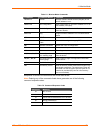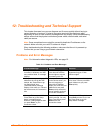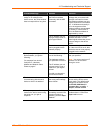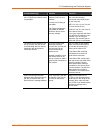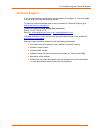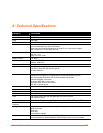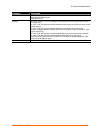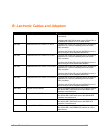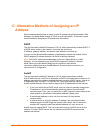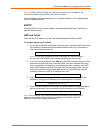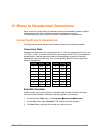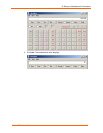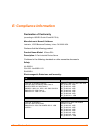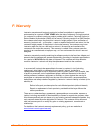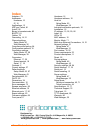
XPress DR+ User Guide 82
D: Binary to Hexadecimal Conversions
Many of the unit’s configuration procedures require you to assemble a series of options
(represented as bits) into a complete command (represented as a byte).
The resulting binary value must be converted to a hexadecimal representation.
Converting Binary to Hexadecimal
Following are two simple ways to convert binary numbers to hexadecimal notation.
Conversion Table
Hexadecimal digits have values ranging from 0 to F, which are represented as 0-9, A (for
10), B (for 11), etc. To convert a binary value (for example, 0100 1100) to a hexadecimal
representation, treat the upper and lower four bits separately to produce a two-digit
hexadecimal number (in this case, 4C). Use the following table to convert values from
binary to hexadecimal.
Decimal Binary Hex Decimal Binary Hex
0 0000 0 8 1000 8
1 0001 1 9 1001 9
2 0010 2 10 1010 A
3 0011 3 12 1100 C
4 0100 4 13 1101 D
5 0101 5 14 1110 E
6 0110 6 15 1111 F
7 0111 7
Scientific Calculator
Another simple way to convert binary to hexadecimals is to use a scientific calculator,
such as the one available on Windows’ operating systems. For example:
1. On the Windows’ Start menu, click ProgramsÆAccessoriesÆCalculator.
1. On the View menu, select Scientific. The scientific calculator displays.
2. Click Bin (Binary), and type the number you want to convert.



